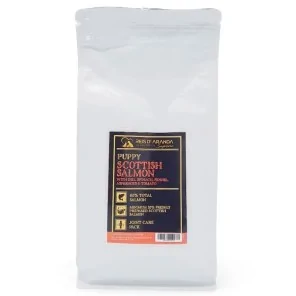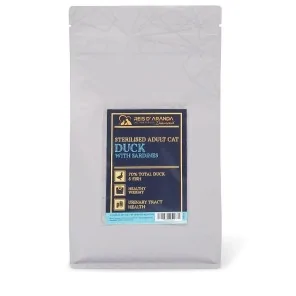Its name says it all: the Vienna blue rabbit comes from Austria. Not only is it beautiful with its shiny blue-grey...
THE BOMBAY CAT
INTRODUCTION
The Bombay cat (also known as the black cat, big cat or black panther) is a breed of cat originating in the United States, developed in 1965 with the aim of achieving a miniature version of the black panther.
THE ORIGIN OF THE BOMBAY CAT
The Bombay cat is an elegant and exotic looking cat breed characterised by its glossy black coat and large, round eyes, which are usually copper or gold in colour. Although its appearance resembles that of a small black leopard, the Bombay cat is a breed created through selective breeding and has no direct relation to leopards or other wild felines.
The origin of the Bombay cat dates back to the 1950s, when an American breeder named Nikki Horner had the idea of developing a breed of cat with the appearance of a black panther but with a small size and friendly temperament. To achieve this, she crossed Burmese cats (also known as Burmese sacred cats) with cats with black fur, such as black shorthair cats and black American shorthair cats. The aim was to achieve a solid black-coated cat with the affectionate and sociable temperament of the Burmese.
The selective breeding process took time, but finally, in the early 1970s, Nikki Horner succeeded in establishing a line of cats with the desired characteristics and named them ‘Bombay’ after the city of Bombay (now Mumbai) in India, which evokes the image of a black leopard.
The Bombay cat is recognised as an official breed by several cat organisations, including the International Cat Association (TICA) and the Cat Fanciers' Association (CFA).
WHAT DOES THE BOMBAY CAT LOOK LIKE?
According to the Bombay breed standard information detailed in TICA (The International Cat Association), the head shape is medium sized. Rounded, flat, with large, round, wide set eyes with considerable width between the eyes, in line with the base of the ear. Shape and size are more important for expression than colour.
There are several types of eye colour: (BU) preferred deep golden colour and (BO) coppery to golden; although most commonly seen are coppery. The ears are medium sized, broad set, but not flared. Broad at the base with rounded tips. Alert, slightly tilted forward. The position of the ears contributes to the rounded appearance of the head.
The chin is firm, broad, rounded with great depth, reflecting a perfect bite, the muzzle being equally rounded, short, broad, well developed.
In profile, the head should show good depth between the top of the skull and the lower jaw. There should be no flatness above the nose. The bridge of the nose may have a slight protrusion. The end should be rounded to complement the roundness of the head and should be in line with the muzzle. The neck should be short, thick and well developed.
The torso is of medium size. Fairly compact, well balanced, rounded, broad chest. Firmly muscled. Surprisingly heavy for its size. Robust in bone, with a broad ribcage. Like his legs, large and sturdy too, proportionate along with the feet. Tail of medium length and in balance with the body. Tapering to a rounded tip.
Bombay cats are not particularly known for being a vocal breed, but like all cats, they can have different levels of vocalisation depending on their individual personality and temperament. Some Bombay cats may be more talkative than others, while some may be relatively quiet.
In general, the vocalisation of Bombay cats tends to be soft and melodious compared to some other cat breeds which may be louder. They may emit soft, charming meows to express their needs or to communicate with their owners. In fact, they may meow for food, attention, play or to express any other need they have.
THE HEALTH OF THE BOMBAY CAT
Bombay cats are noted among breeds for their abundant appetite, which is why they are cats that can very easily become overweight when housed.
They are generally in good health which makes them a long-lived breed, however the common ailment is hypertrophic cardiomyopathy as well as certain cranial deformities, inherited from their ancestors the Burmese cats.
THE PERSONALITY OF THE BOMBAY CAT
This breed is characterised by sensitive attitudes as well as outstanding intelligence. They are affectionate cats who are very attached to their owners2 always looking for cuddles and attention, therefore family life is ideal for these cats. Their instinct for play and liveliness will always be present.
It is an animal with a wide tolerance, it can live with other cats without any problem, dogs and children are also welcome in the bombay's life.
The bombay's gait is similar to that of an adult panther, with low shoulders.
CONCLUSION
Although Bombay cats are not well known in Europe, in the United States they are one of the most sought after cat breeds in shows and competitions. In fact, the Bombay cat has gained great recognition over the years by being entered in almost all cat shows.
Leave a comment
Log in to post comments
















